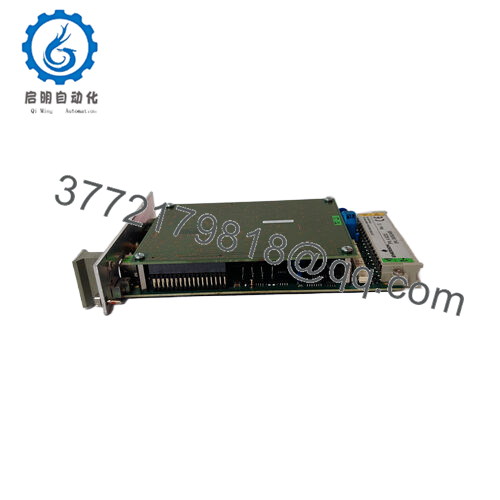Description
The Emerson A6220 is widely used in critical industrial environments such as power plants, refineries, and manufacturing facilities to monitor shaft relative vibration in rotating machinery. This module provides essential predictive and protective monitoring for sleeve bearing machines, aiding in early detection of mechanical faults and helping prevent costly downtime. It is particularly useful where the machine casing is significantly heavier than the rotor, and the bearing housing exhibits low vibration under normal conditions, making direct bearing monitoring ineffective.
Industries rely on the A6220 for its exceptional ability to monitor vibration accurately, assess bearing condition, and ensure rotor balance, contributing to optimized machinery lifespan and operational safety. It is a key component in asset management and condition-based maintenance programs.
- A6220
Product Introduction and Positioning
The Emerson A6220 is a shaft relative vibration monitor that serves as a compact, one-slot plug-in module designed to integrate with Emerson’s AMS 6500 machinery health monitoring system. It measures the relative vibration of shafts using inputs from displacement sensors, producing precise velocity and displacement data to support machinery diagnostics.
Positioned as an API 670-compliant monitor, the A6220 supports dual-channel independent or combined vibration measurement modes and delivers buffered and proportional analog outputs (0/4-20 mA, 0-10 V) for seamless integration with control and monitoring systems. Its hot-swappable design minimizes downtime during maintenance and upgrades.
Key Technical Features and Functional Benefits
The A6220 supports two independent channels capable of measuring axial, radial, or tangential vibrations over a frequency range of 0.1 Hz to 1000 Hz, accommodating diverse machinery types and fault conditions. Its high resolution of 0.001 mm/s ensures extremely precise vibration detection, enabling early fault identification.
The monitor offers self-check diagnostics for continuous hardware, sensor, and cable monitoring, reducing unexpected failures and fostering reliable operation. With outputs configurable for different vibration parameters, it provides actionable data for operators and maintenance teams.
Robustly constructed to withstand harsh industrial environments, the module features electrical isolation from power supply, compliance with API 670 standards, and a compact size that reduces cabinet space requirements. Its integration within the AMS 6500 system allows extensive machinery health and performance analytics, improving maintenance planning.
Detailed Technical Specifications
| Parameter | Value |
|---|---|
| Model | A6220 |
| Brand | Emerson |
| Product Type | Shaft Relative Vibration Monitor |
| Channels | 2 independent or combined channels |
| Frequency Range | 0.1 to 1000 Hz |
| Resolution | 0.001 mm/s |
| Output Signal | 0/4-20 mA, 0-10 V buffered outputs |
| Isolation | Electrical isolation from power supply |
| Operating Temperature Range | -40 to +60 °C |
| Size and Weight | Approx. 16 cm x 16 cm x 12 cm, 0.8 kg |
| Compliance | API 670 |
| Mounting | 1-slot plug-in |
Related Modules or Compatible Units
A6125 – Dual-channel piezoelectric case vibration monitor.
A6410 – Valve and case expansion monitor within AMS 6500 suite.
A6110 – Case seismic vibration monitor complementing shaft vibration monitors.
A6312 – Speed and key phasor monitor for rotating machines.
A6210 – Thrust position and differential expansion monitor.
Installation Notes and Maintenance Best Practices
Install the Emerson A6220 in controlled environments with secure mounting on compatible chassis modules. Ensure sensor and cable connections meet specified standards for vibration sensitivity and signal integrity. Employ proper grounding and shielding in wiring to minimize interference.
Regular inspection and calibration of sensors and cables are recommended to maintain accurate vibration monitoring. Utilize AMS software tools for system diagnostics, performance trending, and alarm management to facilitate proactive maintenance.





 WhatsApp: +86 16626708626
WhatsApp: +86 16626708626 Email:
Email:  Phone: +86 16626708626
Phone: +86 16626708626


